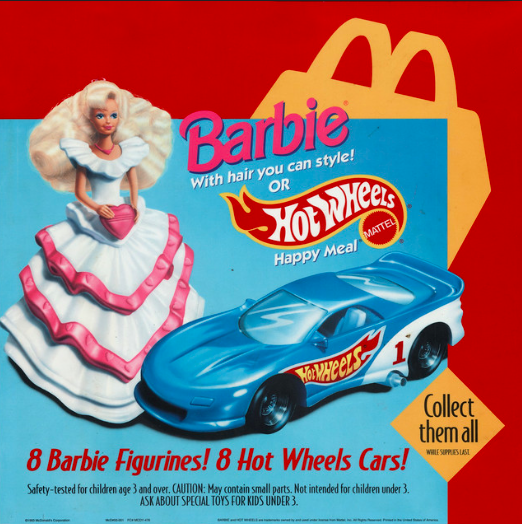
The emergence of the McDonald’s Adult happy meal has brought up numerous comments on the appearance of the toys. While the toys represent the original beloved characters, though unpleasant, this commentary echoes a much larger debate on the push of gender bias in McDonald’s toys.
Undoubtedly, those of us who lived off McDonald’s as children remember the workers asking about the gender of the kids or making assumptions about the performance of the gender they saw. Little girls had malibu barbies and ponies, while boys received trucks and Star Wars memorabilia.
In the lens of Gender studies, this is a prime example of how women’s subordinate role is sustained through American culture. More specifically, if women are associated with danger, uncontrollable bodies, and emotions, then the images we publicize must justify that a silent, submissive, and beautiful woman is what we must model ourselves after.
For example, Barbie, the hallmark toy for girls, represents no intersectionality of race and gender, has an abnormal accentuation of the ideal body, and overly feminizes the few non-traditional professions she has with glitter and pink sparkles. The perspective of Gender Studies pulls into question all the ways corporations instilled femininity and masculinity in our childhoods.


